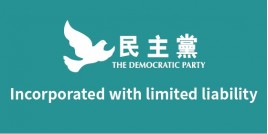The health research team of Democratic Party visited Taiwan last month to study the implementation of its national health insurance system, which have its satisfaction rate maintained at a 70% level. We were impressed by the equity and easy access of the system. Our taxed-based system also used to be equitable. Regrettably it is now changing, as our public medical services have inadequate resources. The long waiting times, and the need to purchase your own medicine, deters many patients from accessing public health services.
The inequality in our health system is likely to get worse. Our overall health care expenditure of about 5 per cent of gross domestic product is far less than most countries. And we have a situation whereby the provision of expensive in-patient services is met by tax revenues. This results in financial stress for the public sector. The reliance on a single financing model of tax revenue is not sustainable. Financing options such as social health insurance and medical savings operate Japan, Taiwan, South Korea and Singapore. While the medical saving system appears to be popular, it is ineffective in alleviating shortages of medical resources.
We believe a social health insurance plan should be introduced, as a supplement to the main financing model of tax revenues. The most important attributes of the social health insurance plan is its assurance that all members of the public can be protected. Unlike private health insurance, there will be no refusal of insurance or increase of premium based on age, disability or sickness. People will contribute according to their levels of income. Those on reduced means will be subsidized with public funds so they can make contributions. Given that young and healthy and old and ailing citizens have taken out health insurance, risks can be shared.
This can ensure that the contributions made by the entire population and tax revenue can meet the enormous level of health expenditure needed to treat those who are ill. We published a consultation paper “Medical protection system for all” and held an expert forum after our return from Taiwan. According to our preliminary estimate, if the government designates no less than 17 per cent of public expenditure for medical services, a personal contribution rate of 0.3 per cent to the social health insurance plan will be sufficient to cover health spending. This contribution rate, however, should be adjusted, because of the aging population, to an estimated rate of 0.9-1.5 per cent in 10 years’ time.
It was published on SCMP, 23 Jan. 2008
Author Yeung Sum




